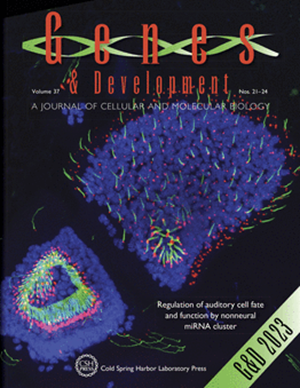Molecular mechanisms and neural mediators of leptin action
IF 7.7
1区 生物学
Q1 CELL BIOLOGY
引用次数: 0
Abstract
The adipose-derived hormone leptin signals the adequacy of body triglyceride stores to specialized leptin receptor (LepRb)-containing cells, which modulate physiology and behavior appropriately for the status of energy reserves. Decreased leptin action initiates a program that restrains a host of energy-intensive processes, promotes food seeking and consumption, and supports the continued availability of glucose and other metabolic fuels in the face of diminished fat stores. In addition to activating the STAT3-dependent transcriptional regulation that mediates most leptin action in vivo, LepRb mediates some leptin effects via a poorly understood second intracellular signaling pathway. Leptin also activates feedback pathways that restrain LepRb signaling in the face of high leptin, as in obesity. Leptin mediates most of its metabolic effects via multiple populations of Lepr-expressing hypothalamic neurons, each of which controls different aspects of leptin action. Although most of these neuron populations contribute only modestly to the control of food intake and body weight by leptin, Glp1r-expressing Lepr neurons inhibit Agrp neurons and strongly suppress feeding and body weight. Going forward, it will be important to define the potentially distinct intracellular responses to leptin for individual Lepr neuron populations, along with the cell type-specific roles for these responses in the physiologic effects of leptin.瘦素作用的分子机制和神经介质
脂肪来源的激素瘦素向专门的瘦素受体(LepRb)含细胞发出身体甘油三酯储存充足的信号,这些细胞调节生理和行为以适当地调节能量储备状态。瘦素的减少启动了一个程序,抑制了大量的能量密集型过程,促进了食物的寻找和消耗,并在脂肪储存减少的情况下支持葡萄糖和其他代谢燃料的持续可用性。除了激活在体内介导大多数瘦素作用的stat3依赖性转录调控外,LepRb还通过一种尚不清楚的第二细胞内信号通路介导瘦素的一些作用。瘦素也激活反馈通路,在面对高瘦素时抑制LepRb信号传导,如肥胖。瘦素通过多个表达lepr的下丘脑神经元群介导其大部分代谢作用,每个下丘脑神经元群控制瘦素作用的不同方面。尽管大多数这些神经元群对瘦素控制食物摄入和体重的作用不大,但表达glp1r的Lepr神经元抑制Agrp神经元并强烈抑制摄食和体重。展望未来,重要的是要确定个体麻风神经元群体对瘦素的潜在不同细胞内反应,以及这些反应在瘦素生理效应中的细胞类型特异性作用。
本文章由计算机程序翻译,如有差异,请以英文原文为准。
求助全文
约1分钟内获得全文
求助全文
来源期刊

Genes & development
生物-发育生物学
CiteScore
17.50
自引率
1.90%
发文量
71
审稿时长
3-6 weeks
期刊介绍:
Genes & Development is a research journal published in association with The Genetics Society. It publishes high-quality research papers in the areas of molecular biology, molecular genetics, and related fields. The journal features various research formats including Research papers, short Research Communications, and Resource/Methodology papers.
Genes & Development has gained recognition and is considered as one of the Top Five Research Journals in the field of Molecular Biology and Genetics. It has an impressive Impact Factor of 12.89. The journal is ranked #2 among Developmental Biology research journals, #5 in Genetics and Heredity, and is among the Top 20 in Cell Biology (according to ISI Journal Citation Reports®, 2021).
 求助内容:
求助内容: 应助结果提醒方式:
应助结果提醒方式:


